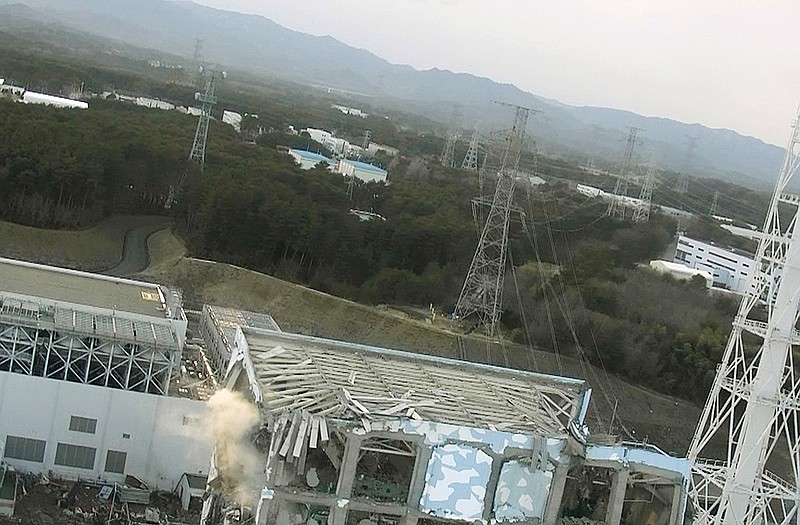YAMAGATA, Japan (AP) - Emergency workers seemed to try everything they could think of Thursday to douse Japan's most dangerously overheated nuclear reactors: helicopters, heavy-duty fire trucks, even water cannons normally used to quell rioters. But they couldn't be sure any of it was easing the peril at the tsunami-ravaged facility.
Three reactors have had at least partial meltdowns at the Fukushima Dai-ichi nuclear plant, where wisps of white steam rose from the stricken units Friday morning. But Japanese and U.S. officials believe a greater danger exists in the pools used to store spent nuclear fuel: Fuel rods in one pool were believed to be at least partially exposed, if not dry, and others were in danger. Without water, the rods could heat up and spew radiation.
It could take days and "possibly weeks" to get the complex under control, U.S. Nuclear Regulatory Commission Chairman Gregory Jazcko said. He defended the U.S. decision to recommend a 50-mile evacuation zone for its citizens, a much stronger measure than Japan has taken.
A senior official with the U.N.'s nuclear safety agency said there had been "no significant worsening" at the Fukushima Dai-ichi nuclear plant but that the situation remained "very serious." Graham Andrew told reporters in Vienna that nuclear fuel rods in two reactors were only about half covered with water, and they were also not completely submerged in a third.
If the fuel is not fully covered, rising temperatures will increase the chances of complete meltdowns that would release much larger amounts of radioactive material than the failing plant has emitted so far.
Low levels of radiation have been detected well beyond Tokyo, which is 140 miles south of the plant, but hazardous levels have been limited to the plant itself. Still, the crisis triggered by last week's earthquake and tsunami has forced thousands to evacuate and drained Tokyo's normally vibrant streets of life, its residents either leaving town or holing up in their homes.
Two Japanese military CH-47 Chinook helicopters began dumping seawater on Unit 3 on Thursday morning, defense ministry spokeswoman Kazumi Toyama said. The choppers doused the reactor with at least four loads of water in just the first 10 minutes, though television footage showed much of it appearing to disperse in the wind.
Chopper crews flew missions of about 40 minutes each to limit their radiation exposure, passing over the reactor with loads of about 2,000 gallons of water. Another 9,000 gallons of water were blasted from military trucks with high-pressure sprayers used to extinguish fires at plane crashes, though the vehicles had to stay safely back from areas deemed to have too much radiation.
The official death toll from the disasters stood at 5,692 as of Friday morning, with 9,522 missing, the national police agency said.
As retrieving bodies increasingly becomes the focus of rescue crews in Japan's northeast, it's clear that Friday's earthquake and tsunami - believed to have killed more than 10,000 - took their heaviest toll on the elderly in this rapidly aging nation, where nearly one in four people is over 65.
Many, unable to flee, perished. Survivors lost their daily medicines. Hospitals lost power and water. Sometimes, the consequences have been fatal.
Fourteen older patients died after being moved to a temporary shelter in a school gym because their hospital was in the evacuation zone near the overheating plant.
Two of the patients died in transit Monday and 12 more at the gym, said Chuei Inamura, a Fukushima government official. It took until Thursday to get all the remaining patients into other hospitals.

